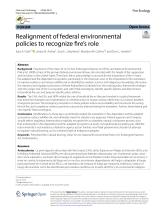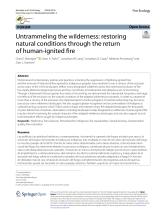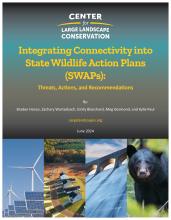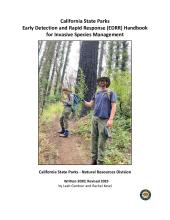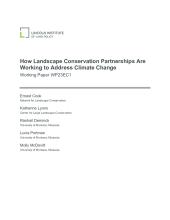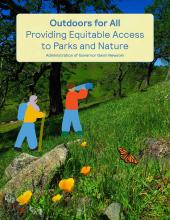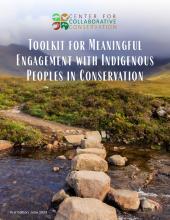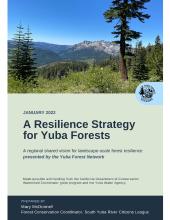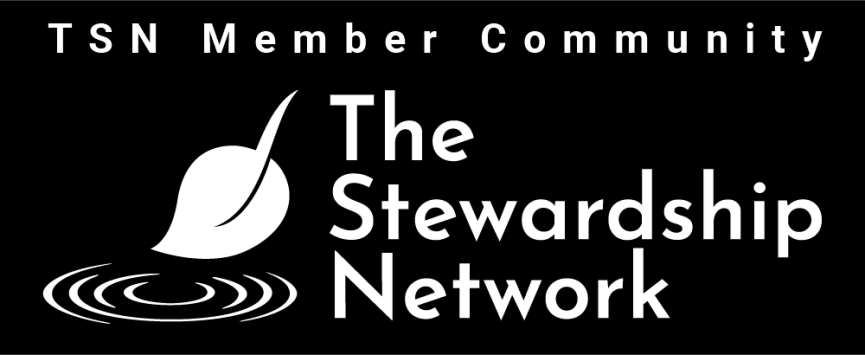Check out how collaboration is supporting landscape-scale species recovery, forest health, fire resilience, and habitat restoration across the state.
University of California Berkeley, August 2024
Federal environmental laws like the CAA, ESA, and NEPA overlook fire’s ecological role. This paper urges policy reforms to support fire restoration and respect Tribal sovereignty.
- Details
Enactment of the Clean Air Act (CAA), Endangered Species Act (ESA), and National Environmental Policy Act (NEPA), three of the primary federal environmental laws, all coincided with the height of fire suppression and exclusion in the United States. These laws fail to acknowledge or account for the importance of fire in many fire-adapted and fire-dependent ecosystems, particularly in the American west, or the imperative for fire restoration to improve resiliency and reduce wildfire risk as identified by western science and Indigenous knowledge. We review the statutory and regulatory provisions of these federal laws to identify how the existing policy framework misaligns with the unique role of fire in ecosystems and with Tribal sovereignty, identify specific barriers and disincentives to beneficial fire use, and propose specific policy reforms.ion/details here.
Aldo Leopold Wilderness Research Institute, August 2024
- Details
Historical and contemporary policies and practices, including the suppression of lightning-ignited fires and the removal of intentional fires ignited by Indigenous peoples, have resulted in over a century of fire exclusion across many of the USA’s landscapes. Within many designated wilderness areas, this intentional exclusion of fire has clearly altered ecological processes and thus constitutes a fundamental and ubiquitous act of trammeling. Through a framework that recognizes four orders of trammeling, we demonstrate the substantial, long-term, and negative effects of fire exclusion on the natural conditions of fire-adapted wilderness ecosystems. In order to untrammel more than a century of fire exclusion, the implementation of active programs of intentional burning may be necessary across some wilderness landscapes. We also suggest greater recognition and accommodation of Indigenous cultural burning, a practice which Tribes used to shape and maintain many fire-adapted landscapes for thousands of years before Euro-American colonization, including landscapes today designated as wilderness. Human-ignited fire may be critical to restoring the natural character of fire-adapted wilderness landscapes and can also support ecocultural restoration efforts sought by Indigenous peoples.
California State University Chico, July 2024
Indigenous-led ecocultural stewardship — where ecosystem health and Indigenous cultural practices are interwoven — is key for building climate resilience, biodiversity protection, and bridging social-ecological divides.
- Details
The climate crisis has exacerbated many ecological and cultural problems including wildfire and drought vulnerability, biodiversity declines, and social justice and equity. While there are many concepts of social and ecological resilience, the exemplar practices of Indigenous stewardship are recognized in having sustained Indigenous peoples and their countries for millennia and past climate change events. California has been at the crossroads of many of these issues, and the historic and current contributions of Indigenous peoples to addressing these provide an excellent study of ecocultural stewardship and leadership by Indigenous peoples to achieve climate resilience.
Center for Large Landscape Conservation, June 2024
The report reviews how state wildlife plans address ecological connectivity, identifies key threats (e.g., roads, dams, development), and offers a menu of actionable steps for better integration.
- Details
State Wildlife Action Plans (SWAPs) are fundamental for advancing connectivity conservation in the United States. To support integrating connectivity into SWAPs, the Center for Large Landscape Conservation reviewed SWAPs from the 2015 revision cycle and interviewed state wildlife planners. The intent of this report is to provide SWAP planners and partners with a comprehensive “menu” of actions and best practices that can advance connectivity conservation in the face of diverse threats.
California State Parks, 2023
A practical guide for managing invasive species in California State Parks using EDRR strategies to protect ecosystems.
- Details
This Early Detection Rapid Response (EDRR) Handbook for Invasive Species Management is designed for California State Parks (Parks) district natural resource managers and those planning and conducting terrestrial early detection surveys, field crews collecting data and eradicating new weeds, and partners, volunteers, or other groups interested in assisting in and following these methods.
California State Parks Natural Resources Division (NRD) embarked on an EDRR pilot project in 2012 with Santa Cruz and Orange Coast Districts volunteering to lead the effort. Their Natural Resources (NR) staff contributed hundreds of hours in development of the methods and tested them firsthand. In 2014, Sierra, North Coast Redwoods, and San Diego Coast Districts joined the training and data collection effort.
The original handbook was written in 2015 by Ramona Robison and Nita Barve (NRD) with Tim Hyland and Daniella Schweizer (Santa Cruz District). Technical assistance and review were provided by the Santa Cruz Resource Conservation District and the California Invasive Plant Council (Cal-IPC). Some of the contents of the original handbook have been preserved; we have updated and expanded on various components for greater clarity and utility. The 2020 version was reviewed by Tim Hyland (Santa Cruz), Lana Nguyen (Orange Coast), and Michelle Forys (North Coast Redwoods) who are all implementing successful EDRR programs in their respective districts. The 2023 revision incorporates minor changes and additions.
Lincoln Institute of Land Policy; Network for Landscape Conservation; University of Montana, May 2023
Examines how collaborative partnerships use land conservation to deliver nature-based climate solutions at scale.
- Details
-
The Lincoln Institute of Land Policy, in partnership with the Network for Landscape Conservation and the University of Montana, has released a working paper exploring the role of large landscape conservation in providing nature-based climate solutions.
Land conservation addresses climate change both by mitigating greenhouse gas emissions and by helping human and natural communities adapt to the changes caused by global warming. To be most effective, land conservation strategies dealing with climate change need to be implemented at scale and typically require collaboration among many partners who need to work together to overcome obstacles like political boundaries, uncoordinated plans, competition for funding and cultural conflicts.
This paper examines the experience of collaborative partnerships in dealing with climate change. The examination draws from a recent online survey of landscape conservation partnerships, interviews with over 40 practitioners, web research, and email communications. This paper presents practices that appear to be most effective and makes recommendations that can accelerate and broaden the benefits of landscape conservation and restoration in meeting climate goals.
California Natural Resources Agency, May 2023
Outlines actions for equitable access to parks and nature, engaging government, communities, and philanthropy statewide.
- Details
-
The Outdoors for All strategy charts progress on equitable outdoor access to date, highlights work underway, and identifies additional actions to realize the promise of a California for All. This strategy outlines pathways that government, community organizations, philanthropy, private sector, and residents across California can take together to continue increasing access to the outdoors and nature.
Center for Collaborative Conservation, January 2023
Offers a roadmap for conservation practitioners to support Indigenous-led solutions and uphold sovereignty in decision-making.
- Details
There is an increasing need for recognizing Indigenous sovereignty when defining successful conservation outcomes. Even when conservation focuses on a “do no harm” approach towards Indigenous Peoples and communities, the contributions, perspectives, and resulting benefits are often not taken into consideration, thereby increasing social and environmental inequities. When those affected by environmental decisions are excluded from the decision-making process, opportunities to collaboratively solve problems in new, innovative, and empowering ways are limited. To help fill this gap, in this Toolkit we seek to build a roadmap where conservation practitioners can support solutions which are driven by community expertise and needs.
Yuba Forest Network, January 2022
Outlines collaborative strategies to restore forest resilience in Yuba through climate adaptation and stewardship.
- Details
-
The Yuba Forest Network aims to connect stewards of the Yuba watershed by uniting and building skills and efforts to create a resilient landscape. Modeled after Tahoe-Central Sierra Initiative's Resilience Framework, the purpose of this document is to describe a shared vision of forest health and resilience and desired outcomes for the region across stakeholders of the Yuba Forest Network.
Center for American Progress, October 2022
Highlights how rural communities need stronger capacity to benefit from federal infrastructure and climate programs.
- Details
-
This brief article links to two October 2022 reports CAP issued that assess the ways in which missed opportunities in implementing federal resilience programs exemplify the challenges facing rural communities.


